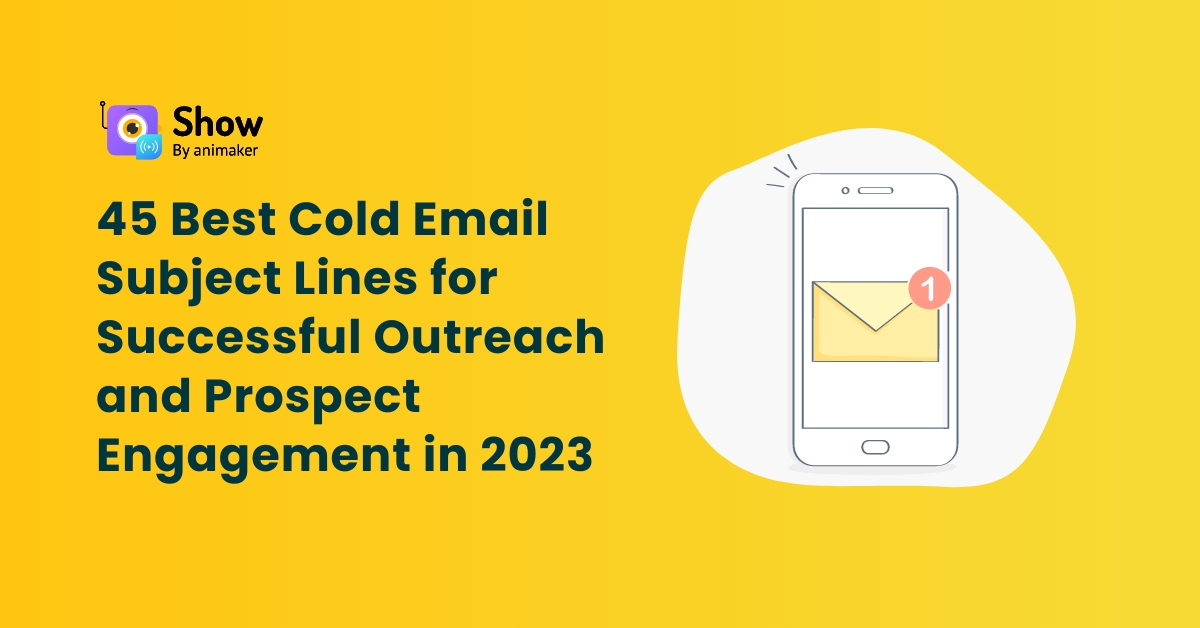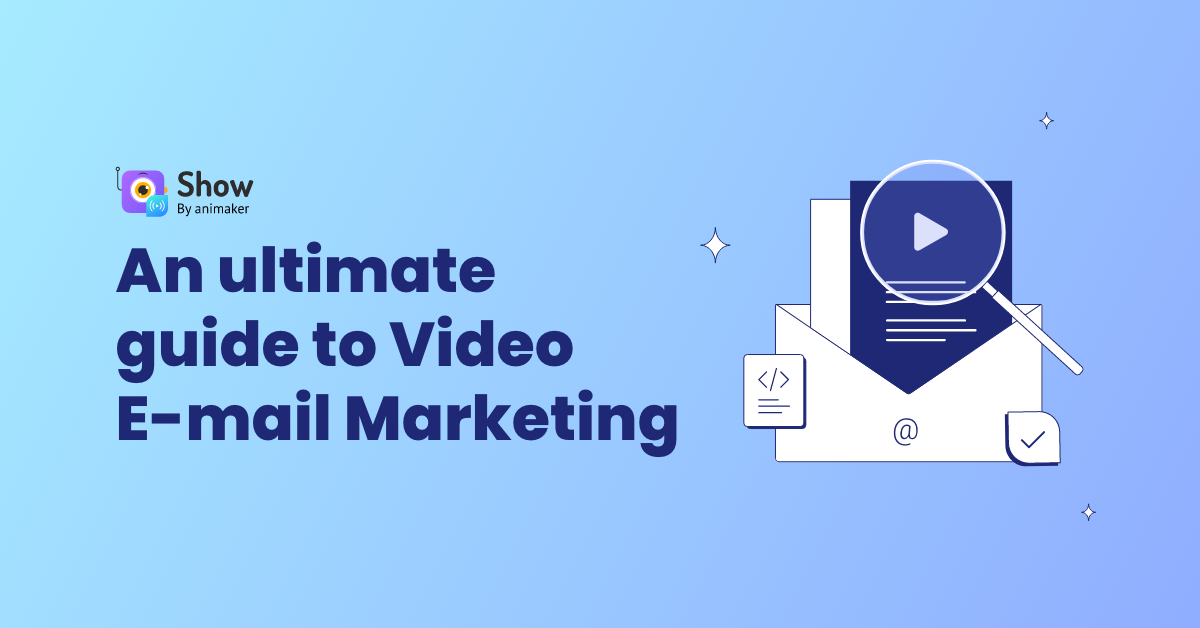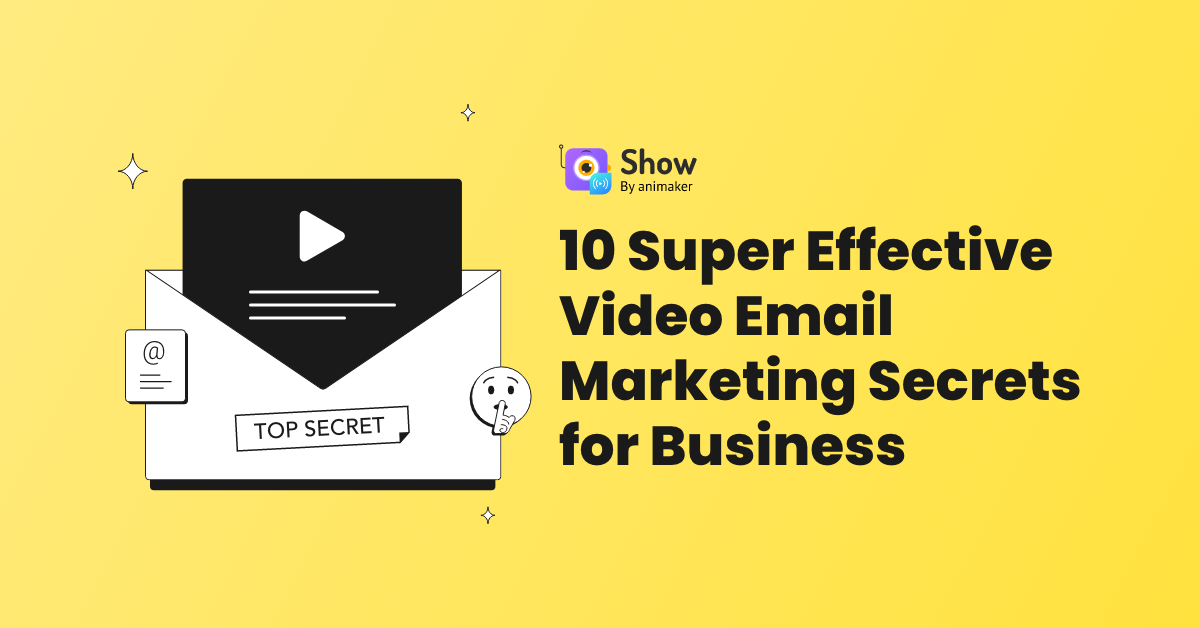Contents
Tips to Craft the Best Cold Email Subject Lines
How to Ensure Your Cold Emails Avoid Spam Filters
Things to Keep in Mind Before Crafting Cold Emails
Here are the 45 best cold email subject lines.
45 Best Cold Email Subject Lines for Successful Outreach and Prospect Engagement in 2023
An effective cold email subject line can convince your recipient to open your email. The best cold email subject lines bridge the gap between an unread email and a read email. In fact, 33% of recipients open their emails based on their subject lines alone. That means an effective cold email subject line can convince one out of three recipients to open your email. In this article, we will look at the top 52 best cold email subject lines to increase your open rates. However, let’s explore what is cold email before that.
What Is a Cold Email?
A cold email is a type of email that is sent to someone with whom you do not have a pre-existing relationship. It is personalized and targeted, aiming to offer value to the recipient. However, it is important to note that there is usually an element of uncertainty with cold emails, as the recipient may not be familiar with you or your brand.
To make cold emails effective, it is essential to craft them carefully and thoughtfully. The key is to provide relevant and valuable content that resonates with the recipient's needs or interests. By doing so, you increase the chances of establishing a connection and receiving a positive response.
When using cold emails, it is crucial to follow best practices and avoid spammy or pushy tactics. Instead, focus on building rapport, establishing credibility, and demonstrating that you genuinely care about the recipient's needs.
Types of Cold Emails
Every cold email has a life of its own. The same goes for the sender of the cold email. They add their own distinct voice to the cold emails. The brand tone and the product can be decisive in deciding the kind of cold email you choose to send to the recipient. It helps to know at least a little about the recipient to choose the kind of cold emails. Here are the different types of cold emails.
1. Problem-Solution Cold Emails
You start with the prospect’s pain points while crafting this type of cold email. Later, you move on to communicate how your product or services solves the problem. It can sound simple, but doing it while maintaining brevity can be difficult.

2. Story-Driven Cold Emails
“Marketing is no longer about the stuff that you make, but about the stories you tell.” - Seth Godin
These cold emails opt for a relatable story and narrative-driven style over a done-to-death sales pitch inundated with numbers. These emails use real-life examples or fictional characters to drive home their point. The recall value of such emails is immense. In fact, 62.15% remember stories while only 26.90% remember stats.

3. Complimentary Cold Emails
“Everybody likes a compliment.” - Abraham Lincoln
Paying compliments has become a rare sight. Complimentary cold emails can help you warm up to your prospects. Although, it will need a wee bit of research. Ensure that your compliment is relevant to your recipient.

Tips to Craft the Best Cold Email Subject Lines
1. Clear and Concise
The best cold email subject lines are clear and concise, providing recipients with a straightforward idea of what the email contains. Avoid using ambiguous or vague language that may confuse or mislead the reader.
2. Personalization
Personalized subject lines are among the best cold email subject lines, addressing recipients by their names or referencing their specific interests or previous interactions. In fact, personalized emails are opened 82% more than run-of-the-mill generic emails. This approach makes the email feel more tailored and relevant to each individual, fostering a stronger connection with your audience.
3. Make it Interesting
To stand out from the crowd, the best cold email subject lines inject creativity and curiosity. Use intriguing questions, playful language, or unexpected phrases to capture recipients' attention and entice them to open the email.
4. Create Urgency
Incorporating a sense of urgency is a hallmark of the best cold email subject lines. Time-sensitive language such as "limited time offer" or "ending soon" motivates recipients to take prompt action, encouraging higher open rates and engagement.
5. Offer Value
The best cold email subject lines clearly convey the value and benefits recipients will gain from opening and reading the email. Pain-point-driven subject lines have an average open rate of 28%. Highlighting how your email can address their pain points or fulfill their needs will entice recipients to explore further.
6. Avoid Clickbait
While it is essential to make subject lines interesting, the best cold email subject lines avoid using misleading or deceptive language that might disappoint or frustrate recipients. Authenticity is crucial in building trust with your audience.
7. Include Keywords
The best cold email subject lines include relevant keywords related to the email's content. Incorporating specific keywords improves the subject line's searchability and ensures that your email reaches the right audience.

You can craft the best cold email subject lines. However, they would not be of any use if they get caught by the spam filters. Here is how you can avoid spam filters.
How to Ensure Your Cold Emails Avoid Spam Filters
By following these guidelines, you can improve your cold email deliverability and avoid getting caught in spam filters, ensuring that your emails reach the intended recipients' inboxes.
1. Ensure High Open Rates
Spam filters are designed to recognize emails with low open rates as potential spam. In fact, only 23.9% of sales emails are opened. Personalizing subject lines using the recipient’s name gives an average open rate of 43.41%. To avoid this, focus on crafting compelling subject lines and relevant content that entices recipients to open your emails. Personalization and value-driven messaging can also increase open rates.

2. Encourage Recipients to Reply
Encourage recipients to reply to your cold emails, as engaged communication signals to spam filters that your emails are legitimate and solicited. Promptly respond to any replies you receive to further establish credibility.

3. Avoid Letting Your Email Go to Junk
Be mindful of the content and formatting of your cold emails to prevent them from being flagged as spam. Avoid using excessive capitalization, excessive punctuation, and excessive use of images or links, as these can trigger spam filters.
4. Avoid Deletions
If recipients consistently delete your emails without opening them, spam filters may take notice and direct your emails to the junk folder. Focus on delivering valuable and relevant content to increase the chances of your emails being read.
5. Get Added to Address Books
Encourage recipients to add your email address to their address books or safe sender lists. This action signals to spam filters that the recipients recognize you as a trusted sender.
Things to Keep in Mind Before Crafting Cold Emails
Here are the things you should keep in mind before crafting your cold emails.
1. Time of the Day
Consider the timing of your cold emails carefully. Sending emails at the right time can significantly impact their open rates and overall effectiveness. Avoid sending cold emails during weekends or late at night, as they may get buried in recipients' inboxes. Instead, aim to send emails during regular business hours on weekdays, when people are more likely to be actively checking their emails.

2. Using Emojis
Emojis can add a touch of personality and creativity to your cold emails, but they should be used sparingly and thoughtfully. When using emojis, ensure they align with your brand voice and the context of the email. Overusing emojis or using inappropriate ones can make your email appear unprofessional or spammy. Use emojis to complement your message and evoke positive emotions, but avoid excessive or irrelevant usage.

3. Language
The language and tone of your cold emails play a crucial role in engaging recipients and encouraging them to respond positively. Keep your language clear, concise, and professional. Avoid jargon and technical terms that may confuse or alienate the reader. Personalize your language to make the email feel more individualized and relevant to the recipient. Use a friendly and approachable tone while maintaining professionalism to establish a genuine connection with the reader.
Here are the 45 best cold email subject lines.

1. "Question about [goal]"
Example: "Question about Increasing Your Website Traffic"
In this cold email subject line, the sender is enticing the recipient to open the email by posing a question related to their specific goal of increasing website traffic. By keeping the subject line intriguing and personalized, the recipient is encouraged to open the email to find out what the question is and how it relates to their goals. This subject line sparks curiosity and initiates a conversation, making it more likely for the recipient to engage with the email.
2. "[Mutual connection] recommended I get in touch"
Example: "John Smith from ABC Corp recommended I get in touch"
The sender mentions a mutual connection and recommended reaching out to the recipient. By including the name of the mutual connection, the subject line establishes a sense of familiarity and trust, making the recipient more likely to open the email.
3. "Hi [name], [question]?"
Example: "Hi Emily, Quick question about your marketing strategy"
The sender addresses the recipient by name and poses a question related to their marketing strategy. The subject line is personalized and concise, piquing the recipient's interest to open the email and respond to the question.
4. "Did you get what you were looking for?"
Example: "Did you find the perfect solution for your email marketing?"
The sender asks a direct question related to the recipient's search for a solution in this cold email subject line. It creates curiosity and encourages the recipient to open the email to see if the sender has something relevant to offer.
5. "[the e.e. cummings subject line]"
Example: "i carry your goals with me (and some tips too)"
The sender uses the style of poet e.e. cummings to create a unique and intriguing subject line. It stands out in the recipient's inbox and entices them to open the email to discover what the sender has to say.
6. "Hoping to help"
Example: "Hoping to help you reach your sales targets"
The sender expresses their intention to help the recipient achieve their sales targets. It conveys a positive and helpful tone, making the recipient more inclined to open the email.
7. "A [benefit] for [prospect's company]"
Example: "A cost-saving solution for XYZ Corp"
The sender offers a specific benefit tailored to the prospect's company. It communicates a value proposition that can intrigue the recipient to open the email and learn more.
8. "X tips/ideas for [pain point]"
Example: "5 effective tips for boosting email open rates"
The sender promises to provide useful tips for a specific pain point the recipient may be facing. It appeals to their interest in finding solutions and prompts them to open the email for valuable insights.
9. "Idea for [topic the prospect cares about]"
Example: "Innovative idea for improving lead generation"
The sender presents an innovative idea related to a topic the recipient cares about (lead generation). It captures their attention and encourages them to explore the email further.
10. "10x [prospect's company]'s traction in 10 minutes"
Example: "10x your website's traction in just 10 minutes"
The sender promises significant results (10x traction) for the prospect's website in a short amount of time (10 minutes). It creates a sense of urgency and curiosity, motivating the recipient to open the email and learn how they can achieve such remarkable growth.
11. "We have [insert fact] in common ..."
Example: "We have a mutual interest in AI-driven marketing strategies"
In this cold email subject line, the sender highlights a shared interest or fact they have in common with the recipient, creating a connection and increasing the likelihood of the recipient engaging with the email.
12. "So nice to meet you, [Prospect]!"
Example: "So nice to meet you, Sarah!"
The sender expresses enthusiasm about connecting with the recipient and uses their name for personalization. It conveys a friendly and warm tone, inviting the recipient to open the email.
13. "Feeling [insert emotion]? Let me help"
Example: "Feeling overwhelmed with email marketing? Let me help"
The sender addresses a specific emotion the recipient might be experiencing and offers assistance. It shows empathy and provides a potential solution, encouraging the recipient to explore the email further.
14. "Hoping you can help."
Example: "Hoping you can share your insights on content marketing"
The sender politely requests the recipient's help or expertise on a particular topic. It conveys respect and appreciation for the recipient's knowledge, motivating them to engage with the email.
15. "This is a sales email, but …"
Example: "This is a sales email, but hear me out!"
The sender acknowledges that the email is sales-oriented but invites the recipient to give it a chance in this cold email subject line. It sets clear expectations and encourages transparency in communication.
16. "Your yearly [X] target"
Example: "Your yearly revenue target - let's exceed it together"
The sender addresses a specific target or goal that the recipient may have. It creates a sense of alignment and partnership in achieving the target, sparking the recipient's interest to open the email.
17. "[Situation] at [Company]"
Example: "Challenges at XYZ Corp - let's find solutions"
The sender acknowledges a specific situation or challenges the recipient's company may be facing. It shows empathy and offers assistance in finding solutions, making the recipient more receptive to the email.
18. "Who is in charge of X at [company]?"
Example: "Who is in charge of marketing strategy at ABC Corp?"
The sender seeks to identify the person responsible for a specific role or function at the recipient's company. It indicates a desire for relevant communication and encourages the recipient to respond with the right contact.
19. "Have you tried [restaurant in Prospect's town]?"
Example: "Have you tried The Gourmet Bistro in your town?"
The sender references a specific restaurant in the recipient's town, creating a casual and friendly tone. It can lead to a conversation about shared interests outside of business.
20. "So, you speak sign language?"
Example: "So, you're fluent in sign language?"
In this cold email subject line, the sender makes an assumption or references a unique skill or interest the recipient may have. It sparks curiosity and prompts the recipient to open the email to see what the sender has to say about it.
21. "Will cut to the chase"
Example: "Will cut to the chase - Exclusive offer inside!"
The sender promises to get straight to the point and offers an exclusive offer to entice the recipient to open the email.
22. "Might be off-base here, but ..."
Example: "Might be off-base here, but your website could use some upgrades"
In this cold email subject line, the sender acknowledges a potential risk of being wrong while hinting at areas of improvement for the recipient's website. It piques the recipient's curiosity to explore further.
23. "If you're struggling with [common pain point], you're not alone"
Example: "If you're struggling with lead generation, you're not alone"
The sender addresses a common pain point the recipient may be experiencing and reassures them that many others face the same challenge. It establishes empathy and positions the sender as a potential solution provider.
24. "Can I make your life 20% easier?"
Example: "Can I make your marketing efforts 20% easier?"
The sender poses a direct question about easing a specific aspect of the recipient's work. It intrigues the recipient to learn more about the proposed solution.
25. "[Name], saw you're focused on [goal]"
Example: "John, saw you're focused on increasing sales"
The sender uses the recipient's name for personalization and references their specific goal or focus. It shows that the sender has done some research, making the email more relevant and engaging.
26. "Will I see you at [event]?"
Example: "Will I see you at the Marketing Summit?"
In this cold email subject line, the sender inquires if the recipient will attend a specific event. It encourages the recipient to respond and potentially arrange a meeting at the event.
27. "Can I help?"
Example: "Can I help with your content strategy?"
The sender straightforwardly offers assistance with a particular aspect of the recipient's business. It conveys a helpful and collaborative tone, encouraging the recipient to engage.
28. "Tired of salespeople who never give up?"
Example: "Tired of salespeople who never give up? We're different."
In this cold email subject line, the sender identifies a common frustration and positions themselves as a different kind of salesperson. It appeals to the recipient's pain point and invites them to explore the email further.
29. "[Name] suggested I reach out"
Example: "Alex suggested I reach out to discuss your marketing strategy"
In this cold email subject line, the sender mentions a mutual contact who recommended the connection. It establishes credibility and provides context for the email.
30. "Fellow [University] grad here!"
Example: "Fellow NYU grad here. Let's reconnect and catch up."
The sender establishes a shared connection as fellow graduates of the same university, prompting the recipient's curiosity to reconnect and engage in conversation.
31. "Let’s talk about [topic/idea]"
Example: "Let's talk about boosting your online presence"
In this subject line, the sender proposes a specific topic or idea to discuss with the recipient, inviting them to explore the email for further insights.
33. "A [better/smarter/faster] way to [reach a specific goal]"
Example: "A smarter way to manage your team's projects"
In this subject line, the sender highlights a better or more efficient approach to achieving a specific goal that is relevant to the recipient's needs.
34. "Can I help you with [reaching a specific goal]?"
Example: "Can I help you with your email marketing strategy?"
In this subject line, the sender offers assistance in achieving a specific goal, signaling a willingness to provide value and support.
35. "Quick question regarding [project]"
Example: "Quick question regarding your upcoming product launch"
In this subject line, the sender indicates a brief inquiry related to a specific project or initiative, sparking the recipient's interest to open the email and provide input.
36. "Hey [name], check this out"
Example: "Hey Mark, check this out - Exciting marketing trends"
In this subject line, the sender uses a casual tone to draw the recipient's attention to something interesting or valuable in the email.
37. "Where do I even start?"
Example: "Where do I even start with content creation?"
The sender acknowledges a common challenge faced by the recipient and proposes to address it in the email.
38. "[Name], I need your advice"
Example: "Lisa, I need your advice on event planning"
The sender seeks the recipient's expertise or opinion on a specific topic, appealing to their sense of importance and knowledge.
39. "Request to connect"
Example: "Request to connect on LinkedIn - Collaboration opportunity"
The sender expresses a desire to connect with the recipient, mentioning a potential collaboration opportunity.
40. "Goodbye, [Name]"
Example: "Goodbye, Rachel - Last chance for the exclusive offer"
In this cold email subject line, the sender creates a sense of urgency by indicating that it might be the last chance for the recipient to take advantage of an exclusive offer or opportunity.
41. "You missed it"
Example: "You missed it - Exciting webinar replay inside!"
In this subject line, the sender notifies the recipient that they missed a previous event or offer, encouraging them to explore the email for a replay or alternative option.
42. "Essential resources to help with [challenge]"
Example: "Essential resources to help with lead generation"
In this subject line, the sender offers valuable resources to address a specific challenge faced by the recipient, positioning themselves as a source of helpful information.
43. "Free to talk at [date]?"
Example: "Free to talk at 3 PM tomorrow?"
In this subject line, the sender proposes a specific date and time for a conversation, making it easy for the recipient to schedule a meeting.
44. "Have you solved your [challenge] yet?"
Example: "Have you solved your data security challenge yet?"
In this subject line, the sender inquires about a specific challenge, prompting the recipient to explore the email for potential solutions.
45. "You’ll love this article, [name]!"
Example: "You'll love this article, Sarah! Top marketing strategies revealed"
In this subject line, the sender suggests an article tailored to the recipient's interests, generating curiosity to read more.
Conclusion: Write the Best Cold Email Subject Lines
Crafting the best cold email subject lines is an art that requires a delicate balance of creativity and relevance. Cold emails are your chance to make a great first impression. Hence, be genuine, relevant, and respectful of your recipient's time. By crafting subject lines that captivate, you will increase the likelihood of your cold emails being opened, read, and responded to – paving the way for fruitful connections and opportunities.
Frequently Asked Questions (FAQs)
1. What are cold email subject lines, and why are they important?
Cold email subject lines are the first lines recipients see when they receive an unsolicited email. They play a crucial role in enticing recipients to open the email and engage with its content. Subject lines are important as they determine whether the email gets noticed and read or ends up in the recipient's spam folder.
2. How can well-crafted subject lines improve the open rates of cold emails?
Well-crafted subject lines that are personalized, intriguing, and relevant to the recipient's needs can significantly improve open rates. By piquing curiosity and clearly conveying the email's value proposition, recipients are more likely to open the email to learn more.
3. What are some common mistakes to avoid when writing cold email subject lines?
Some common mistakes to avoid include using spammy language, writing overly long subject lines, being too vague or generic, and using excessive capitalization or exclamation marks. It's also essential to avoid misleading subject lines or making promises that the email content doesn't deliver.



